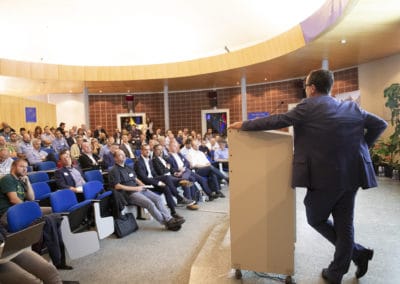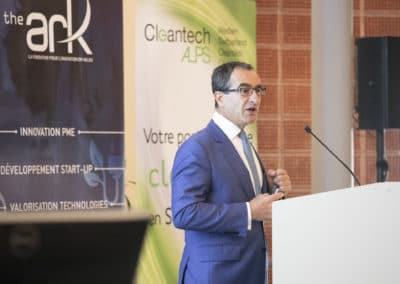It is vital to invest in renewable sources of energy and stop relying on energy forecasts from “classical” economists. Furthermore, the price of different forms of clean energy continues to fall, which makes them increasingly competitive in the market. This is the opinion of Michael Liebreich, the founder and senior contributor of Bloomberg New Energy Finance, who gave a presentation at the Smart Energy event in August 2018.

About
Context
It is vital to invest in renewable sources of energy and stop relying on energy forecasts from “classical” economists. Furthermore, the price of different forms of clean energy continues to fall, which makes them increasingly competitive in the market. This is the opinion of Michael Liebreich, the founder and senior contributor of Bloomberg New Energy Finance, who gave a presentation at the Smart Energy event in August 2018.
“A clean-energy revolution is taking place and the reactions are pretty positive,” said Michael Liebreich. A huge amount of money has been invested in this sector: the investment in clean energy solutions has grown from 100 billion dollars in 2004 to the current figure of 350 billion dollars. It’s a substantial amount of money, but Liebreich thinks it could be even larger. And he made the point that although there are a lot of good ideas in the energy field, in the end, either nothing is taken forward, or what is taken forward makes very slow progress …
He outlines the future in 2040 as a “Three-Third World”. One third of electricity will come from solar and wind power, one third of vehicles on the road will be electric and the world’s economy will produce one third more GDP from every unit of energy.

The first third: renewable sources of energy
From 2010 onwards, new records (for profitability, installation size, installed power) have regularly been set in the renewable energy sector. Prices have therefore fallen considerably and will soon become median prices. These prices will be higher in Switzerland, but this country is connected to a large number of other countries for which these new prices will be the norm. Renewable energy will become so cheap that the way in which networks are constructed will change and as a result, a maximum amount of this energy will be bought. Although there are already some signs of it happening, the market will have to adapt to clean energy quickly.
Solar power, for instance, is a source of energy which can be invested in without any great risk, according to Liebreich. However, the geographic region has to be taken into account: in the north, it is difficult to produce sufficient solar energy. And yet, everybody would like to have energy day and night, all the year round. This could be achieved by connecting countries to one another. It would not be logical to connect Switzerland to Germany, but it would make sense to connect it to Morocco, because Morocco has a different winter climate.
The second third : electric vehicles
Liebreich pointed out another fact: the price of batteries is falling considerably. In 2025, battery prices will be such that an electric car will no longer be more expensive than a diesel car. “At the moment, if you cover long distances, the price is already competitive!”
In his view, it is air quality, even more than climate change, that will push people into driving electric cars. So there will then be a new issue. There are currently around 4 million electric vehicles worldwide, and this number is set to increase. How will all these vehicles be charged?
There has to be a rethink of the system. It has been shown that people who have electric cars and use a supermarket charging point stay in the shop longer and therefore spend more. Moreover, charging at a supermarket is free, whereas at a motorway service area it is faster but there is a cost. This paradigm shift could lead to a reconsideration of the relevance of on-street charging stations. It’s already the case that roadside petrol stations have disappeared, giving way to larger facilities on the edge of towns.
The third third: decarbonisation of the economy
The final point in the three thirds model described by Michael Liebreich highlights the decarbonisation of the global economy. The term “carbon footprint” designates the total CO2 emissions of companies in which investors hold shares. The idea is that these shareholders will invest responsibly and sustainably and will therefore eliminate from their portfolio those companies that emit a large amount of greenhouse gases or finance fossil fuels. According to Liebreich, digitising the infrastructures would allow more rapid progress to be made.
At the moment, we are not moving fast enough: “At the present rate, it would take us 150 years to decarbonise global energy production, and 332 years to electrify the whole system.” Liebreich says that he is nevertheless optimistic, but acknowledges that there is still work to be done and, in particular, a great many innovations to be developed in order to get there. Report of the presentation given on 31 August 2018 during the Smart Energy event. More information & PDF presentation on Smart Energy Event website : https://www.eventsmartenergy.ch




